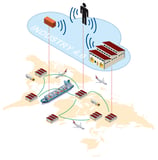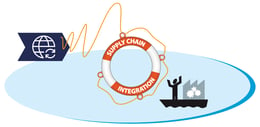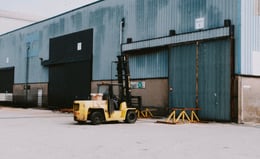7 Ways Consumer Demands Are Changing Supply Chain Management
Jesse Kelber - November 14, 2019

Has your supply chain management situation changed recently? We’d wager it has. With the introduction of Industry 4.0 technologies to the value chain over the last few years, things have been changing at an ever-increasing pace. Where once there were information silos, spreadsheets, and clipboards, now there are SCMS solutions, AI-powered advanced analytics, and IoT sensors. Rather than being the purview of autonomous managers acting in their own departments’ best interests, there are CSOs (chief supply chain officers) acting in the best interest of the whole company. And along with that shift has come a renewed understanding that the company’s best interest is generally synonymous with the customer’s.
Consumer demand for things like faster delivery times, production-on-demand, and instantly available order status updates has largely been powered by the rise of the internet and its ability to provide such immediate feedback. In short, the more people know, the more they want to know. The impact this increase in consumer knowledge and the ready availability of information is having on the manufacturing world (and other B2C industries as well) can be felt up and down the value chain in myriad ways. We’ve pulled together seven primary ways these changing consumer demands are impacting the supply chain, for better or otherwise.
1. Rapid Adoption of New Technologies
The general public has instant access to the latest and greatest technology, and they’ve come to expect no less from their service providers. That means that if your competitor has systems in place that alert customers to production delays, offer shipping options, and allow them to communicate directly with support, guess where those customers will be doing business? That pressure is leading to the rapid adoption of cutting edge emerging technology in order to keep up with consumer technology use.
2. Improved Transparency Throughout the Order Process
That increase in cutting-edge technology is leading to fuller transparency into the end-to-end supply chain. If your customers demand visibility into their orders, you need to ensure the same visibility is available to every stakeholder in the chain so everybody is on the same page. Customers want to know when their order begins production, leaves production for the shipping department, is loaded on the boat, reaches port, etc. all the way through landing at their receiving dock. Industry 4.0 technology like IoT sensors at the factory, smart pallets, and RFID tracking for inventory are all leading the way toward complete supply chain visibility.
3. More Accurate Forecasting
The availability of next-day delivery from ecommerce sites has conditioned consumers to expect shortened delivery of everything. That includes orders of business needs, products produced overseas, and everything in between. The need for accurate demand forecasting is clear. In being able to proactively balance inventory between multiple locations, you can ensure you have the supply needed, in the right place, and at the right time for speedy delivery. And once again, it’s Industry 4.0 technology that’s making this possible via AI-powered advanced analytics. By analyzing historical order data, predictive analytics can guide your decisions and allow for faster order fulfillment, no matter the time of year or location of order.
4. Increased Efficiency of Production
Additive production methods are becoming easier to implement with advances in technologies like 3-D printing. In addition, the use of IoT sensors on production equipment and the associated analytics that allow prescriptive maintenance to be performed, cutting downtime, have all combined to lead to a highly efficient production line. And that’s a good thing for your bottom line, since consumers’ expectations of instant gratification are much easier to meet when you have a smoothly running production line capable of keeping up with demand.
5. Improved Supply Chain Flexibility
Demand fluctuations can seem pretty erratic to the untrained eye. That’s where those advanced analytics come into play, leveling things out and helping you see what’s on the order horizon. The thing is, customers don’t see their purchasing behavior as erratic at all, making it difficult for even the best AI to be accurate 100% of the time. Enter supply chain flexibility. By implementing the Industry 4.0 technologies discussed, you’re setting your entire value chain up for success. Smart pallets that alert you to atmospheric conditions, RFID tags that let you know the precise geo-location of each order, and the smart monitoring software all set you up to be more resilient to demand fluctuations and other disruptions. Not only that, but your supply chain will be better equipped to pivot on demand in order to maintain customer satisfaction.
6. Explosion of Direct-To-Consumer Shipping
The next-day delivery discussed above? That’s largely made possible by the number of companies who have switched to a direct-to-consumer sales model. These companies have opted to build their own ecommerce websites, where the consumer can place orders for shipping directly to their door, skipping any middlemen along the way. This new industry standard is another byproduct of the immediate gratification consumers have been conditioned to expect from their buying experience. From the manufacturing side, combining DTC shipping with additive manufacturing practices can be a huge boon to business and the bottom line, as the expenses associated with storing excess inventory, seasonally elevated shipping costs, and retooling between production runs can all be cut drastically if not eliminated altogether.
7. The Appearance of Dedicated SCM Processes
The emergence of dedicated CSOs using dedicated supply chain management software solutions that rely on Industry 4.0 tech is the ultimate expression of the need for companies to keep on top of their customers’ demands. Most of the tech discussed here came about to assist manufacturers in tracing root causes of production defects or logistics disruptions.
All of this discussion of technology and streamlining your supply chain comes down to this one point: to operate in the company’s best interest, you need to keep your customers happy. And to keep your customers happy, it’s a good idea to monitor emerging supply chain technology and implement the ones that will help you maintain the level of service your customers have come to expect from you.
If you want to learn more get your Guide to Industry 4.0:
LATEST POSTS
- Understand Why Production Planning Needs Specialized Solutions
- Understand Circular Economy in The Manufacturing Industry
- How Can Industry 4.0 IT Integration Be Achieved Smoothly?
- The Significance of Order Sequencing in Discrete Manufacturing
- How to improve your Supply Chain Management: The Power of Control Towers



